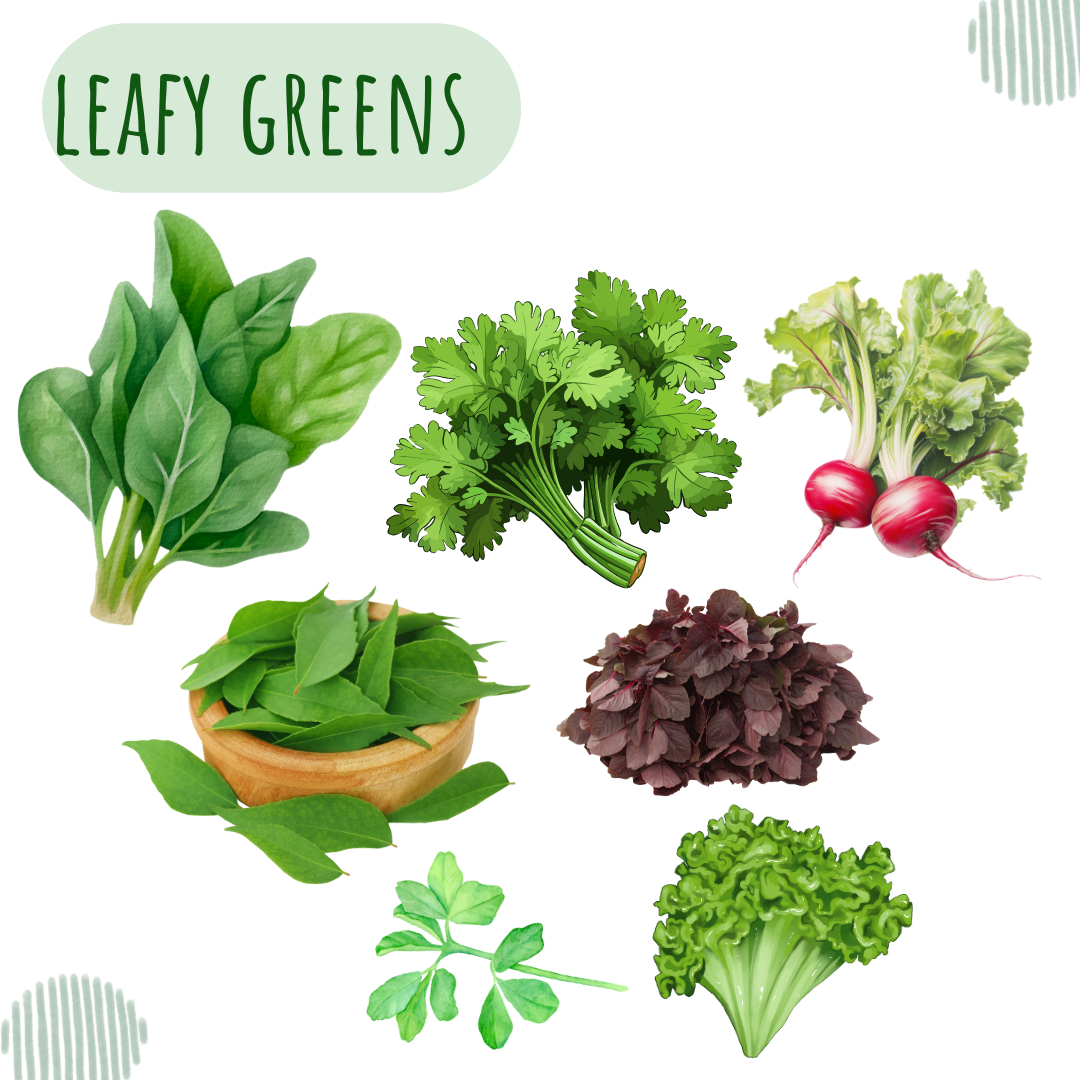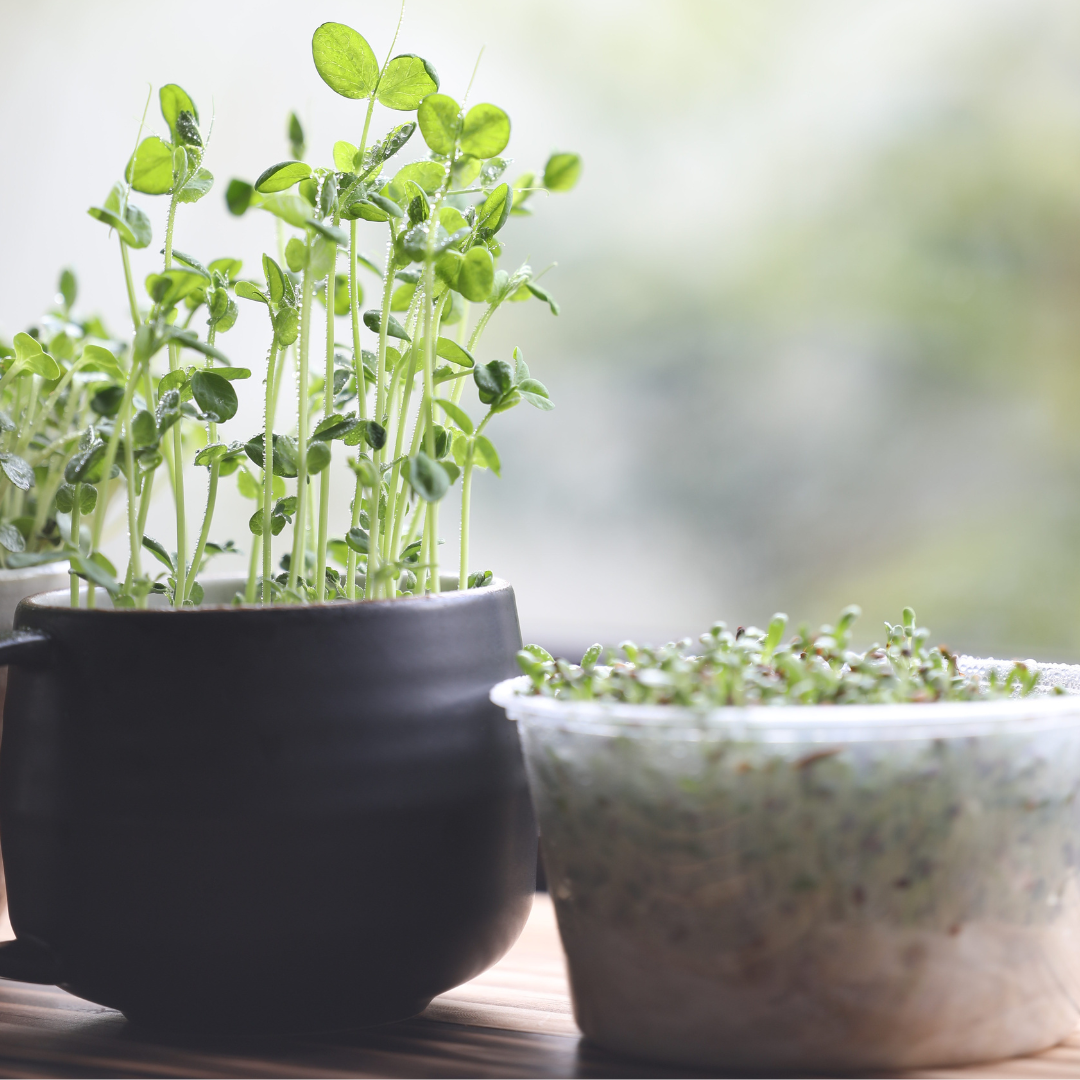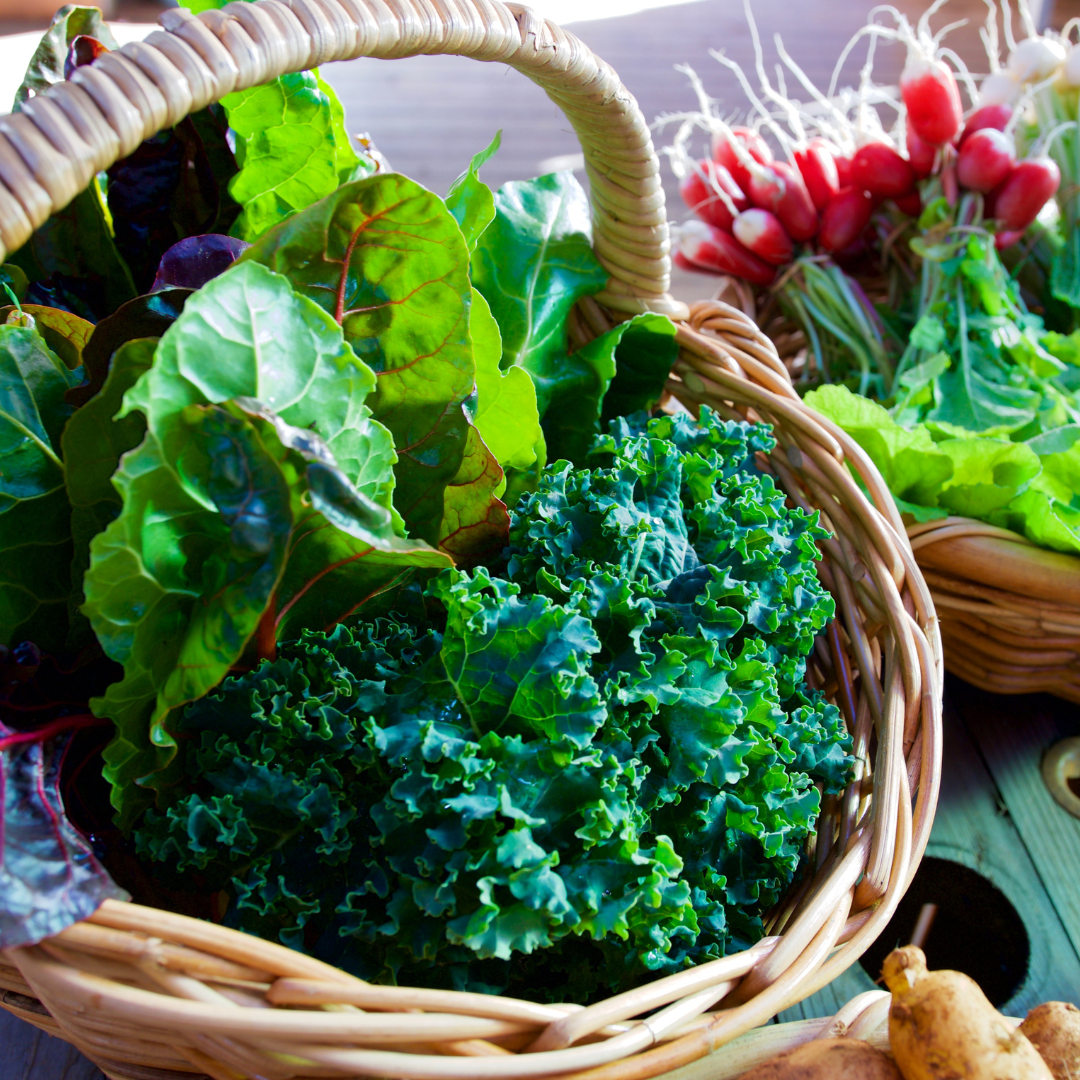L-leafy greens
Growing Leafy greens, including lettuce, spinach, and kale, are not only delicious additions to meals but also pack a powerful nutritional punch.
In this article, we’ll explore the world of leafy greens, discussing their nutritional benefits, different varieties, and how to grow them effectively.
Nutritional Benefits of Leafy Greens
Leafy greens are nutritional powerhouses, offering a plethora of vitamins, minerals, and antioxidants essential for overall health.
They are low in calories and carbohydrates, making them an excellent choice for weight management. Additionally, they are rich in fiber, promoting digestive health and satiety.
7 Different Varieties of Leafy Greens
There are numerous varieties of leafy greens to choose from, each with its own unique flavor and texture.
Here are 7 leafy greens that you can easily grow in your kitchen garden
- Spinach
- Fenugreek leaves
- Red Amaranth leaves
- Curry leaves
- Coriander
- Radish greens
- Lettuce

How to Grow Leafy Greens
Growing leafy greens at home is a rewarding and relatively straightforward process.
Whether you have a spacious backyard or limited space on a balcony or windowsill, you can successfully cultivate a variety of leafy greens with just a few simple steps.
1. Choose the Right Location
Select a sunny location for your leafy greens, as most varieties thrive in full sunlight.
If you’re growing greens indoors, place them near a south-facing window or under grow lights to ensure they receive adequate sunlight.

2. Soil Preparation
Prepare the soil by loosening it to a depth of at least 6 inches and removing any weeds or debris.
Incorporate organic matter, such as compost or aged manure, to improve soil fertility and drainage.

Leafy greens prefer well-draining soil with a pH level between 6.0 and 7.0.
3. Planting Methods
Leafy greens can be grown from seeds or transplants, depending on your preference and the time of year.
If planting seeds directly into the ground, sow them thinly and cover lightly with soil.

Alternatively, transplant seedlings spaced according to the specific requirements of each variety.
4. Watering and Fertilizing

Keep the soil consistently moist but not waterlogged, as excessive moisture can lead to rot and disease.
Water leafy greens regularly, especially during dry periods, and avoid overhead watering, which can promote fungal growth.
Apply a balanced fertilizer or organic compost tea every few weeks to provide essential nutrients for healthy growth.
5. Pest and Disease Management
Monitor your leafy greens regularly for signs of pests, such as aphids, caterpillars, or leaf miners, and promptly address any infestations using natural methods or organic insecticides.
Additionally, practice good garden hygiene by removing fallen leaves and debris to prevent the spread of disease.
With proper care and attention, you can enjoy a bountiful harvest of fresh, flavorful leafy greens right in your own backyard or kitchen garden.

Experiment with different varieties, planting methods, and growing techniques to discover what works best for you.
Whether enjoyed raw in salads or cooked in your favorite dishes, homegrown leafy greens are a delicious and nutritious addition to any meal.
Conclusion
Incorporating leafy greens into your diet is a simple yet effective way to boost your overall health and well-being.
With their abundance of vitamins, minerals, and antioxidants, leafy greens offer a myriad of health benefits with every bite.
Whether enjoyed raw in salads or cooked in your favorite dishes, leafy greens are a delicious and nutritious addition to any meal.

Pingback: Best vegetables and herbs to grow in your vertical garden! -
Pingback: The Nutritional Benefits of Vertical Gardening!
Pingback: Terrace Vertical Gardening: why to choose?
Pingback: Hydroponic Gardening: Pros and Cons
Pingback: Time-Saving Hacks for Your Vertical Garden Maintenance!
Pingback: Why Vertical Gardening is the Future of Urban Farming?